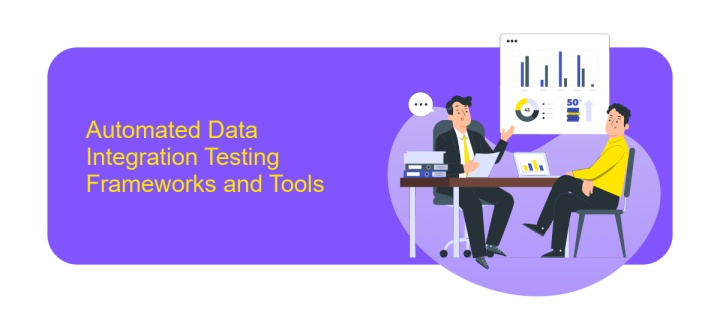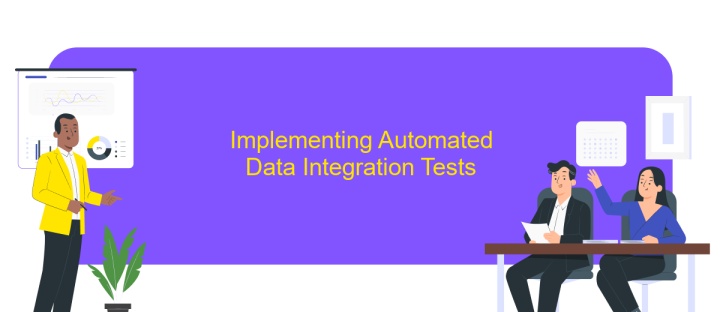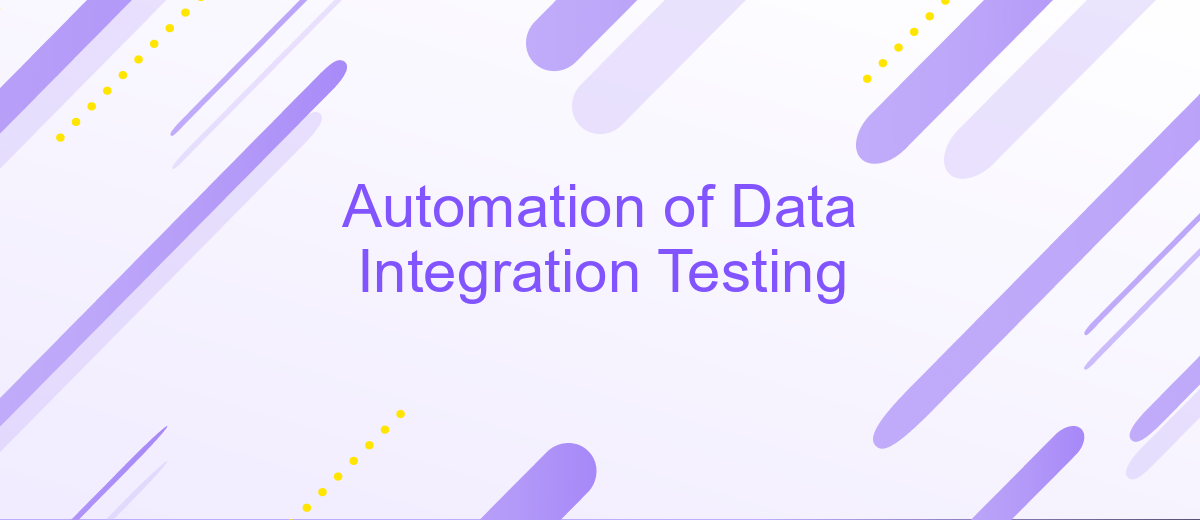Automation of Data Integration Testing
In today's fast-paced data-driven world, ensuring seamless data integration is crucial for businesses to maintain operational efficiency and accuracy. Automation of data integration testing emerges as a game-changer, offering a robust solution to streamline the validation process. By reducing manual efforts and minimizing errors, automated testing not only accelerates the integration process but also enhances data reliability, enabling organizations to make informed decisions with confidence.
Introduction to Data Integration Testing and its Challenges
Data integration testing is a critical process in ensuring that disparate data sources are accurately combined into a single, coherent dataset. This type of testing verifies that data is correctly extracted, transformed, and loaded (ETL) into the target system without loss or corruption. As organizations increasingly rely on data-driven decision-making, the importance of robust data integration testing cannot be overstated. It helps maintain data integrity, consistency, and accuracy across various business applications.
- Complexity of data sources: Integrating data from multiple, heterogeneous sources can be challenging due to differences in data formats and structures.
- Data volume and scalability: Testing must accommodate large volumes of data and ensure scalability as data grows.
- Data quality issues: Inconsistent, incomplete, or inaccurate data can lead to faulty integrations.
- Change management: Constant updates and changes in data sources require ongoing testing efforts.
Overcoming these challenges necessitates a comprehensive approach to data integration testing, incorporating automated tools and strategies. By addressing these issues, organizations can ensure reliable data integration, ultimately supporting better business outcomes and strategic initiatives.
Automated Data Integration Testing Frameworks and Tools

Automated data integration testing frameworks and tools are essential in ensuring the reliability and accuracy of data flow across various systems. These frameworks streamline the process by automating test case generation, execution, and validation, significantly reducing the manual effort required. They often include features such as data mapping, transformation validation, and end-to-end testing capabilities. By leveraging such tools, organizations can enhance their data quality, reduce integration errors, and accelerate deployment times, leading to more efficient data-driven decision-making.
One notable tool in this domain is ApiX-Drive, which simplifies the setup of data integrations across multiple platforms. ApiX-Drive offers a user-friendly interface and robust automation capabilities, allowing users to configure data workflows without extensive coding knowledge. This service supports a wide range of applications, making it a versatile choice for businesses looking to optimize their data integration processes. By incorporating tools like ApiX-Drive into their testing frameworks, organizations can achieve seamless data integration, ensuring that data is consistently accurate and readily available for analysis.
Implementing Automated Data Integration Tests

Automating data integration tests can significantly enhance the efficiency and accuracy of data validation processes. By implementing automated tests, organizations can quickly identify discrepancies and ensure data consistency across systems. The process begins with defining the test scenarios that reflect real-world data interactions and transformations.
- Identify key data flows and dependencies within the integration architecture.
- Create test cases that cover each critical data path, including edge cases and potential failure points.
- Utilize automated testing tools to execute these test cases, ensuring they are integrated into the continuous integration/continuous deployment (CI/CD) pipeline.
By following these steps, organizations can reduce manual testing efforts and improve data quality assurance. Automated data integration tests provide timely feedback, allowing for quicker resolution of data issues. This approach not only saves time but also enhances the reliability of data-driven decision-making processes, ultimately supporting business objectives with accurate and consistent data insights.
Best Practices for Automated Data Integration Testing

Automated data integration testing is a critical component of ensuring data accuracy and consistency across systems. To achieve effective testing, it is essential to adopt best practices that streamline the process and enhance reliability. The foundation of successful automated testing lies in a well-structured approach that aligns with the project’s objectives and data complexity.
One of the key considerations is to establish a robust testing environment that mirrors the production setup as closely as possible. This helps in identifying potential discrepancies early in the process. Additionally, maintaining a comprehensive suite of test cases that cover various scenarios is crucial for thorough validation.
- Define clear objectives and scope for each test.
- Ensure data quality and consistency before testing.
- Utilize data virtualization to simplify the testing process.
- Incorporate continuous integration and delivery (CI/CD) practices.
- Regularly update and maintain test scripts and data sets.
By adhering to these best practices, teams can significantly reduce the risk of errors and ensure seamless data integration. Continuous monitoring and iterative improvements are essential to adapt to changing data landscapes and evolving business requirements. This proactive approach not only enhances data integrity but also boosts confidence in the system’s overall performance.
Conclusion and Future Trends
In conclusion, the automation of data integration testing is a critical advancement in ensuring the reliability and efficiency of data-driven systems. By automating these processes, organizations can significantly reduce the time and resources required for testing, while also enhancing the accuracy and consistency of their data integrations. This shift not only streamlines operations but also empowers businesses to respond more swiftly to market changes and technological advancements.
Looking ahead, the future of data integration testing lies in the continued development of intelligent automation tools and platforms. Services like ApiX-Drive are leading the way by providing intuitive solutions that simplify the integration process, enabling seamless connectivity between disparate systems. As artificial intelligence and machine learning technologies become more integrated into these platforms, we can anticipate even more sophisticated testing capabilities. This evolution will likely result in more predictive analytics, improved anomaly detection, and ultimately, more resilient data ecosystems. Embracing these trends will be key for organizations aiming to maintain a competitive edge in an increasingly data-centric world.
FAQ
What is data integration testing automation?
Why is automation important in data integration testing?
What challenges can arise in automating data integration testing?
How can ApiX-Drive assist in automating data integration testing?
What are best practices for automating data integration testing?
Apix-Drive will help optimize business processes, save you from a lot of routine tasks and unnecessary costs for automation, attracting additional specialists. Try setting up a free test connection with ApiX-Drive and see for yourself. Now you have to think about where to invest the freed time and money!

